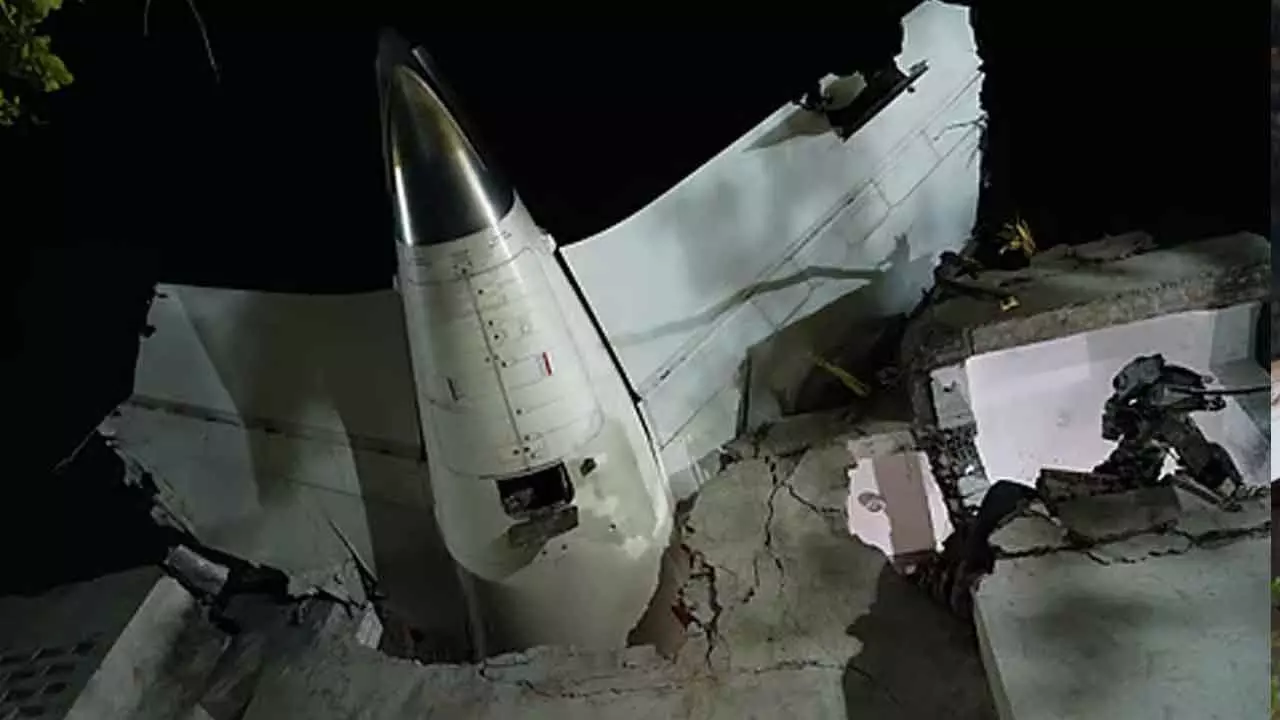Air India Dreamliner Tragedy: Probe Deepens as Nation Mourns and Fleet Faces Scrutiny
India reels from a devastating Air India Dreamliner crash, prompting a deep investigation into engine and flap issues. Discover the latest on the probe, safety checks, and the nation's profound grief.
Air India Dreamliner Tragedy: Probe Deepens as Nation Mourns and Fleet Faces Scrutiny

Ahmedabad, India – A nation holds its breath and mourns the devastating loss of over 240 lives as investigators delve deeper into the horrific Air India Boeing 787-8 Dreamliner crash that unfolded moments after takeoff from Ahmedabad. The tragedy, which also claimed the lives of numerous individuals on the ground, has cast a somber shadow over India and prompted an urgent re-evaluation of aviation safety protocols for the airline's entire Dreamliner fleet.
Sources close to the ongoing investigation revealed on Friday that the primary focus is squarely on critical aspects of the aircraft's performance: the engine's thrust, the functionality of the flaps, and the perplexing issue of why the landing gear remained extended as the plane struggled to gain altitude before its catastrophic descent. The probe is meticulously examining every detail, including potential lapses in Air India's maintenance procedures, to piece together the sequence of events that led to the world's worst aviation disaster in a decade. While some initial speculation swirled, a bird-hit has been largely ruled out as a primary cause. Notably, anti-terrorism experts are also contributing to the extensive investigation.
The heart-wrenching CCTV footage captured the Boeing 787-8, carrying 242 souls bound for London's Gatwick Airport, inexplicably losing height over a residential area of Ahmedabad. The terrifying spectacle culminated in a colossal fireball as the aircraft slammed into a medical college hostel during the bustling lunch hour. The scale of the catastrophe is immense; only one passenger miraculously survived, and local reports tragically indicate that as many as 24 individuals on the ground perished in the wreckage.
In the wake of the disaster, India's aviation regulator has wasted no time in implementing stringent safety measures. Air India has been mandated to undertake additional, rigorous maintenance actions on its Boeing 787-8/9 aircraft equipped with GEnx engines. This includes an immediate "one-time check" of take-off parameters before every flight departing from midnight of June 15th. Furthermore, new 'flight control inspection' procedures have been introduced for transit inspections, alongside mandatory power assurance checks within the next two weeks to verify engine performance.
Amidst the chaos and sorrow, a crucial piece of the puzzle has been recovered: the digital flight data recorder, one of the aircraft's two "black boxes," was found on the rooftop of the impact site. The search continues for the cockpit voice recorder, equally vital for understanding the final moments aboard the doomed flight.
The aviation community, both domestically and internationally, is keenly watching the developments. Investigators from India, the UK, and the US have converged on the site, working tirelessly to uncover the truth. Tata Chairman Natarajan Chandrasekaran, whose conglomerate took control of Air India in 2022, has pledged full transparency throughout the investigation. "We want to understand what happened," Chandrasekaran stated in an internal memo, acknowledging the profound uncertainty surrounding the incident.
GE Aerospace, the manufacturer of the aircraft's engines, has publicly affirmed its commitment to supporting the enhanced safety inspections and providing all necessary technical assistance to ascertain the cause of this tragic accident, reiterating that "safety is our top priority."
The Indian Prime Minister, Narendra Modi, visited the devastated site in his home state of Gujarat, receiving briefings on rescue operations and meeting with some of the injured. His poignant words on X, "The scene of devastation is saddening," echoed the sentiments of a grieving nation.
This particular Dreamliner, which first took to the skies in 2013 and was delivered to Air India in January 2014, marked the first crash involving the wide-body jet since its commercial debut in 2011. The passenger manifest included 169 Indian nationals, 53 Britons, seven Portuguese, and one Canadian, highlighting the global impact of this profound loss.
As rescue workers continue their meticulous search for missing individuals and crucial aircraft parts, the focus remains firmly on a comprehensive and transparent investigation, aimed at understanding the unimaginable and preventing such a tragedy from ever happening again.

